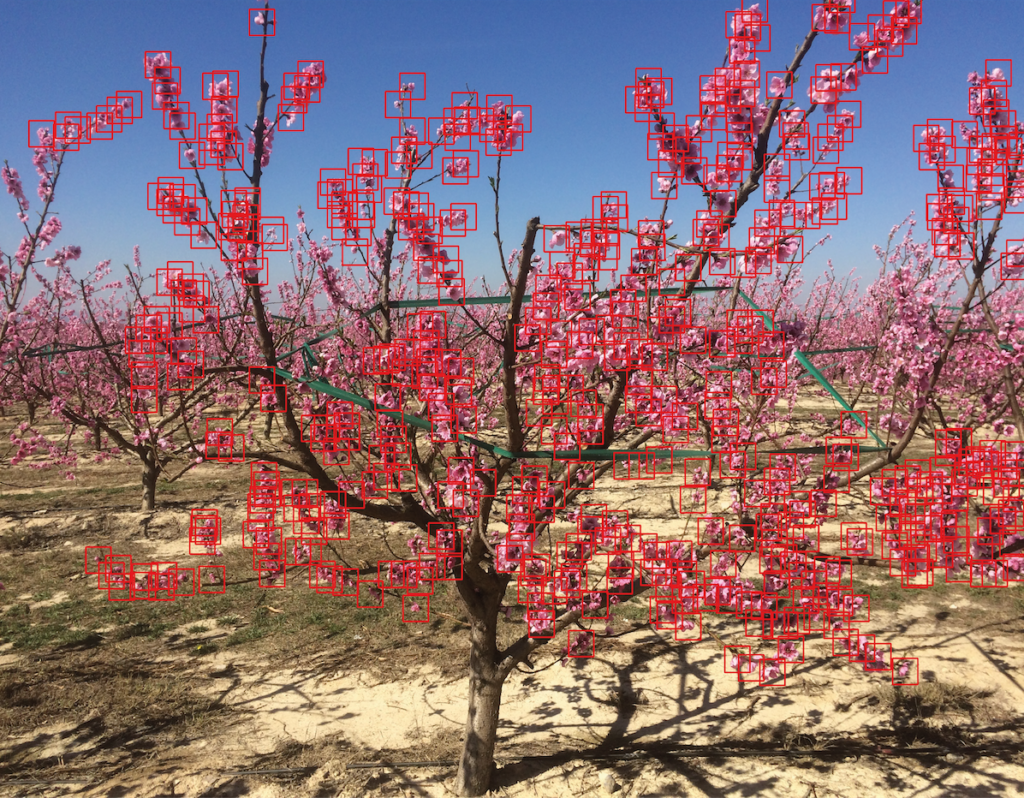A flower-counting AI tool developed for standard smartphones will help farmers predict crop yields – thanks to an international study led by Scottish researchers.
Experts at Heriot Watt university’s National Robotarium teamed up with their counterparts in Chile and Spain to devise a system that could estimate the number of a flowers on a fruit tree.
It scans images on the phone, recognising patterns and features, such as the edges and shapes of petals, even when they overlap or are partially obscured.
When tested on peach orchards in Catalonia, Spain, the AI predicted flower counts with a 90 per cent accuracy – a significant improvement on current manual methods used by farmers.
Those methods include counting by eye or taking area samples, which can have error rates of 30-50 per cent.
By providing more precise yield forecasts up to six months before harvest, the system could help growers optimise water use, allocate human and economic resources more efficiently, and better plan harvesting and distribution logistics.
Fernando Auat Cheein, associate professor in robotics and autonomous systems at the National Robotarium, said: “In countries all across the world, farmers often rely on manual methods to estimate their yields, which can have a significant error margin. By leveraging the power of AI and the convenience of off-the-shelf technology like smartphones, our approach seamlessly integrates with traditional farming practices, making it easier for growers to embrace and benefit from innovative solutions without overhauling their existing methods.
“Throughout the project, we worked closely with peach farmers in Spain to understand their challenges and ensure the system met their requirements. The farmers appreciated the simplicity and accuracy of the flower counting AI, noting its potential to help them make more informed decisions about crop management, such as targeted pruning and herbicide application. By focusing their efforts on areas of the farm that are expected to yield the most fruit, farmers can optimise resources, reduce their environmental footprint, and maximise both the quantity and quality of their harvest.”
He added: “While our research has focused on peaches, the principles behind this technology could be applied to a wide range of fruit crops worldwide, including those grown in the UK. As part of the National Robotarium’s mission to use AI and robotics to drive sustainable and productive agriculture, we collaborate closely with industry partners to develop innovative solutions that tackle real-world challenges, aiming to create tangible benefits for farmers, society, and the environment alike.”
It’s estimated that agriculture uses 65 per cent of the world’s fresh water, almost half of which is wasted, whilst approximately 45 per cent of fruit and vegetables produced for human consumption are lost or wasted every year across the global supply chain.
Researchers from the National Robotarium, the UK’s centre for robotics and AI based in Edinburgh, will validate the AI’s predictions against the actual peach harvest in September 2024. If proven effective, they believe the approach could be adapted for other important crops like apples, pears and cherries, benefiting fruit growers in Britain, Europe and beyond.
The research project has been developed by academics and researchers from the National Robotarium, the Advanced Center for Electrical and Electronic Engineering from Federico Santa Maria Technical University (Valparaiso, Chile) and Universidad Andres Bello (Chile).
